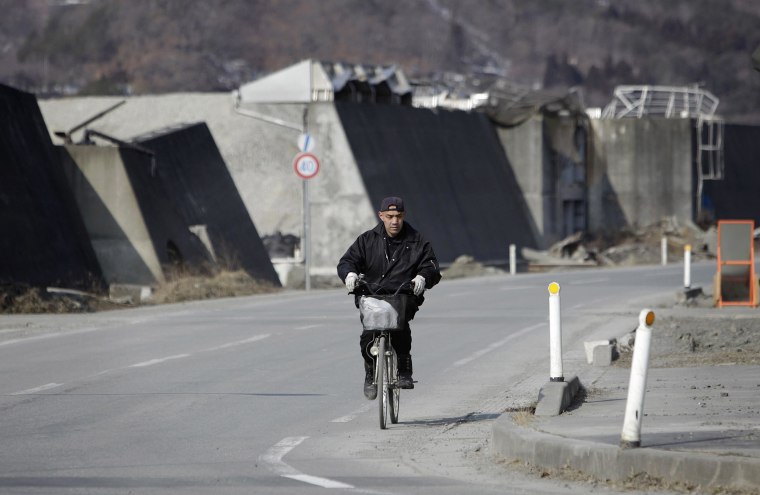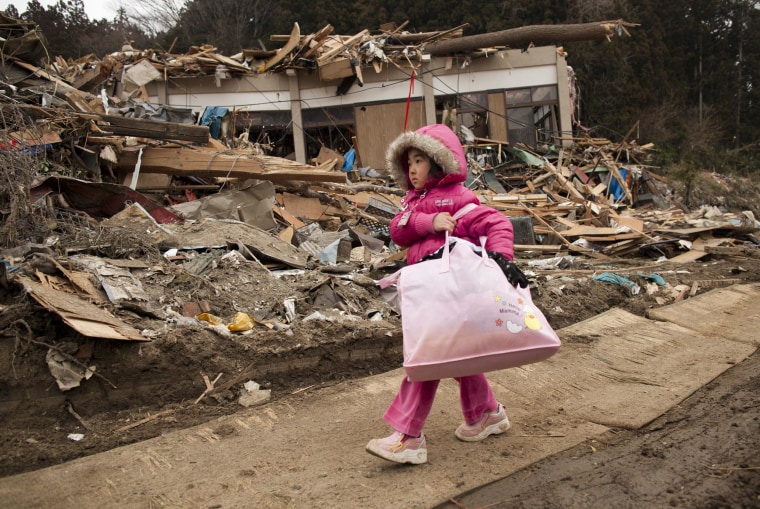TOKYO - When 32-foot waves struck the port town of Ofunato on the northeastern coast of Japan three years ago, many residents assumed they were safe.
"I had always believed that our town, our lives, would be protected by these seawalls. It was always in the subconscious," said Kenji Saito, 66, an executive at his family's confectionery business.
But the tsunami leaped over the six-foot concrete blocks on the waterfront, and reached the third floor of Saito Confectionary’s main office.
"What seawall? What use are they?" Saito exclaimed on a video filmed from a nearby hill where he and his workers fled. He watched the waves swallow up cars, and sweep away entire homes and ships.
The tsunami reached 131 feet in height in some areas, claiming more than 18,000 lives and devastating huge swathes of coastline. Saito’s experience was repeated thousands of times as residents who had thought themselves secure watched monster waves - triggered by a 9.0-magnitude earthquake - breach or destroy 60 percent of the nation’s 186 miles of sea defenses.
Higher and stronger seawalls are now a cornerstone of a massive tsunami rebuilding effort that will cost the government an estimated 25 trillion yen ($254 billion) over five years. In some places, new and improved walls will reach 40 feet in height.
“Rather than have someone rescue us, we need to come up with a recovery plan that we can implement on our own.”
But in spite of the protection they will supposedly provide, a growing number of residents are objecting to the monster walls, saying the five-year rebuilding plan is killing communities that were suffering from joblessness and shrinking populations before the tsunami hit. And many are proposing instead that should cities just rebuild the existing seawalls.
“The city's recovery plan rests on the idea of rebuilding the seawall in the same location,” said Shingo Ikenoya, a 43-year-old resident of nearby Otsuchi who is part of a vividly-named nationwide campaign group, Mammoth Sea Walls are Coming to Attack! “That's where the city, its factories and shops are scheduled to be rebuilt. So unless the wall is finished, the city cannot restart."

He and others in the town – opinion is split roughly 50-50 over the seawall project – complain that reconstruction projects that could revive the local economy haven't moved an inch in the three years. Instead, the devastated town has prioritized rebuilding the seawall and elevating land around the central part of town. With no functioning city center and hardly any jobs, residents have been have been forced to find work elsewhere, critics say.
The city should quickly build a seawall comparable to what was there before, restore basic city services and set up proper evacuation routes and procedures, Mammoth Sea Walls’ members say.
“Rather than have someone rescue us, we need to come up with a recovery plan that we can implement on our own,” Ikenoya said. "This current plan is the exact opposite.”
Just rebuilding the wall will cost 100 billion yen ($1 billion), Ikenoya said. And concrete has a 50-year lifespan so they will have to be maintained and replaced relatively soon. Otsuchi doesn’t have the population or the strength to support such a long-term and costly project, he added.
“Besides, there is no way this new seawall would be able to block a similar tsunami," he said, giving the example of a seawall in nearby Taro, dubbed the "Great Wall" by residents. It crumbled at the first strike of waves in 2011, and close to 200 of the town's 4,434 residents died. Some say that the huge structure instilled a false sense of security that stopped people from evacuating.
An official from the country’s reconstruction agency admitted there were some disagreements about the seawall project, but said local governments were the ones in control.

“Whether they're being built or revised is based on the consensus of the people,” said the official, who asked to remain nameless. “It’s not something where the central government has one universal policy. If there is dissent among residents ... the local governments are advised to proceed with great care.”
But wherever they stand on the seawall project, residents must make sure to not become complacent, confectioner Saito suggests.
"No matter how big a structure is built, you never know the real power of nature,” said the Saito, who retired from his family business and is now a self-styled disaster storyteller. “So one thing I tell all of my visitors is that if they ever encounter a tsunami, that they must absolutely run to higher ground.”